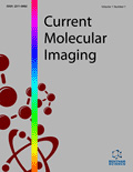Abstract
Purpose: To investigate the association between changes on [18F] fluorodeoxyglucose positron emission tomography (FDG-PET) and clinical deterioration in patients with moderate Alzheimer’s disease (AD), findings of FDG-PET in the first and follow-up stages were compared using stereotactic extraction estimation (SEE) and three-dimensional stereotactic surface projection (3D-SSP).
Methods and patients: Thirty consecutive patients with AD examined twice by FDG-PET were divided into two groups with improved or stable mini-mental state examination (MMSE) (SI group, 14 patients) and deteriorated MMSE (D group, 16 patients). Statistical analysis using SEE in 3D-SSP was used to investigate the changes in Z-score in the frontal, parietal, temporal, and occipital lobes, precuneus, and posterior cingulate cortex (PCC).
Results: Changes in Z-scores in the PCC (p=0.0006) and temporal lobe (p=0.021) were significantly higher in the D group than in the SI group. Z-score was significantly higher in the left PCC compared to the right PCC (p=0.0097).
Conclusions: SEE in 3D-SSP is the helpful method to detect the regional differences. Metabolic reduction on FDG-PET in the left PCC detected by SEE and 3D-SSP is associated with clinical deterioration in patients with moderate AD.
Keywords: Alzheimer's disease, FDG-PET, Stereotactic extraction estimation, 3D-SSP.
 20
20

